1. What Happens After A Stock Reaches 10 Largest Stocks in U.S.
Future expectations are already in the price
Investors should remember that any expectations about the future operational performance of a firm are already reflected in its current price. While positive developments for the company that exceed current expectations may lead to further appreciation of its stock price, those unexpected changes are not predictable.
To this point, charting the performance of stocks following the year they joined the list of the ten largest firms shows decidedly less stratospheric results. On average, these stocks outperformed the market by an annualised 0.7% in the subsequent three-year period. Over five- and ten-year periods, these stocks underperformed the market on average.

SHOULD A TOP-HEAVY STOCK MARKET WORRY US?
Posted by TEBI on June 17, 2020
Found at Abnormal Returns Blog www.abnormalreturns.com
2. Apple Market Cap Up 74% in 3 Months
When the biggest market cap in the world rises > 74% in just 3 months time:
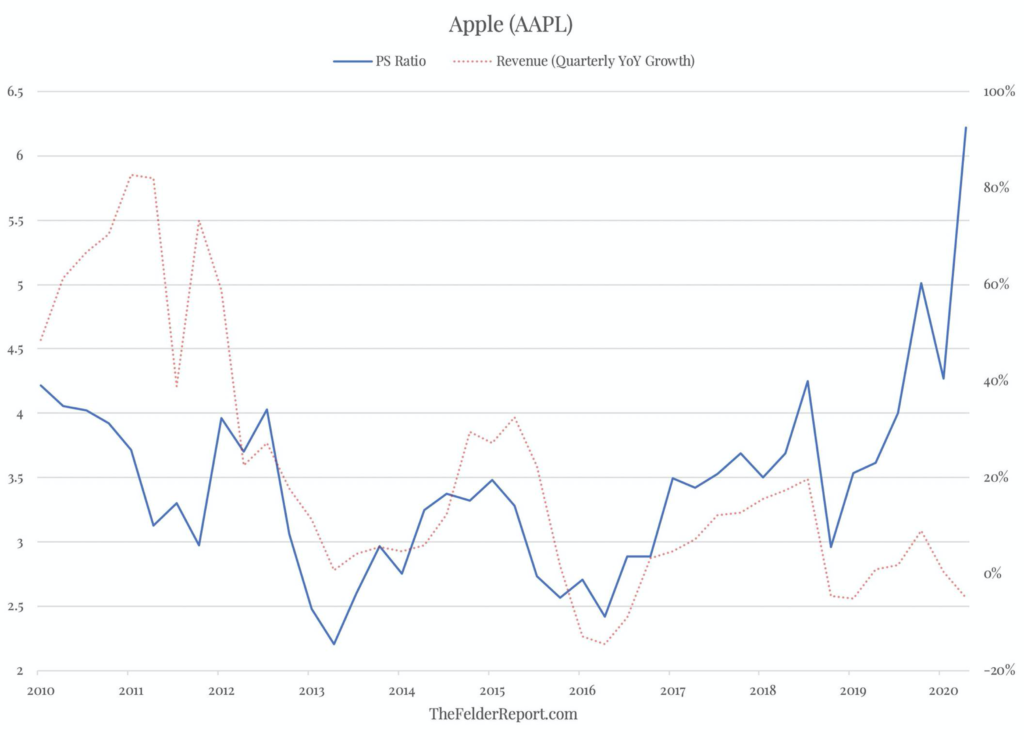
Jesse Felder Blog
https://twitter.com/jessefelde r
3. Another Look at the Market Ex-FaanG
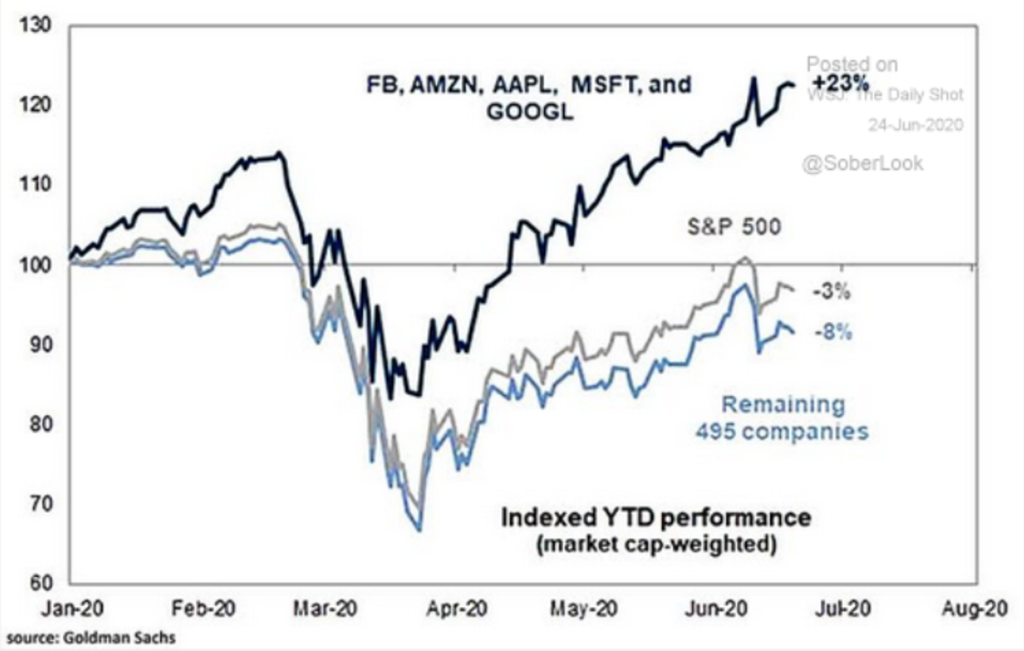
4. Copper and The Green Economy
‘Welcome to the age of copper’: Why the coronavirus pandemic could spark a red metal rally Chloe Taylor
“Huge green and digital stimulus programs, especially in Asia and Europe, will create the conditions for a boom in copper demand — electric vehicles, 5G networks, and renewable power generation all require large amounts of the red metal,” Gloystein said.
Green investments
According to Eurasia Group’s note, clean energy and digitalization programs were expected to push average annual growth demand for copper up by 2.5% this decade, which would likely drive consumption toward 30 million tons by 2030.
Policy changes in Asia and Europe would play an important role in the surge in demand, Gloystein said, with shifts in transportation expected to be the “biggest single driver of copper usage.”
“The electric vehicles industry currently makes up just 1% of copper demand. By 2030, many analysts expect that figure to reach 10%,” he said.
China was expected to invest hundreds of billions of dollars in digitalizing its economy over the coming decade, Gloystein noted, while countries all over the world had committed to massive investments in green infrastructure and electric vehicles.
“Copper will be a key input for virtually all the industries that are now being promoted,” he said. “Welcome to the age of copper.”
https://www.cnbc.com/2020/06/24/coronavirus-why-the-pandemic-could-spark-a-copper-rally.html
JJC Copper ETF
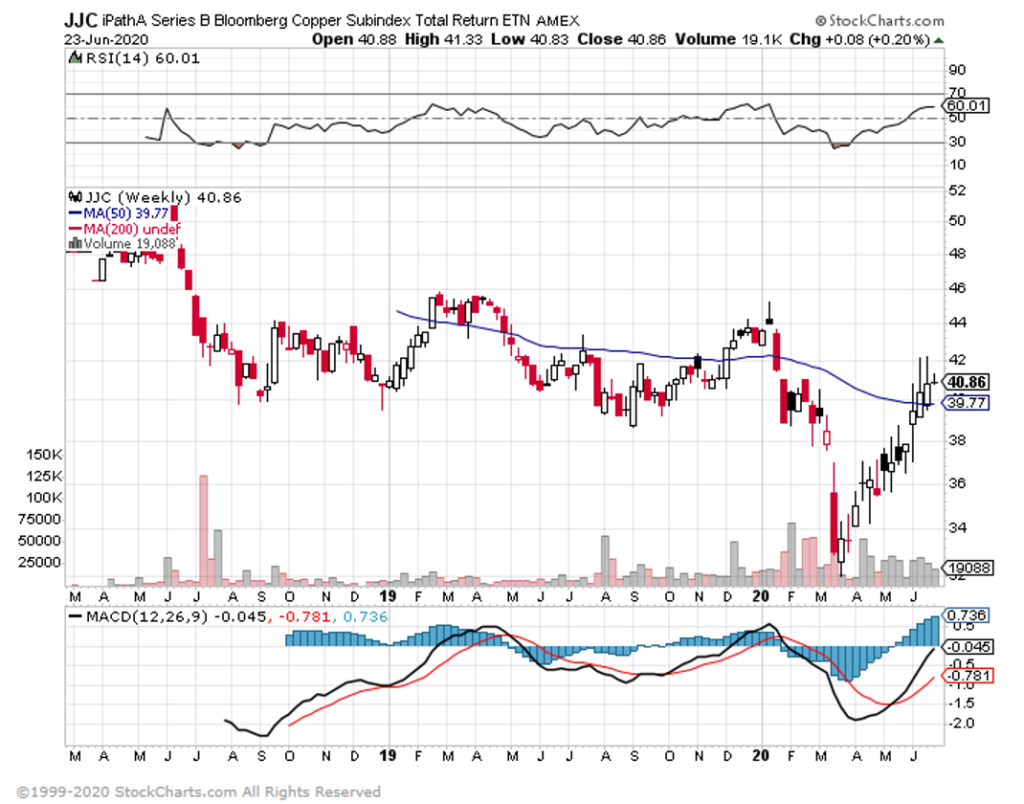
5. Baltic Dry Index Surging
Follow The Baltic Dry Index is surging
This index is a key barometer of demand for shipping in the commodity space. Thus it is often looked to as a macro indicator given the influence of economic activity on the demand for bulk commodities.
The key driver of the current surge is increased Chinese demand for iron ore.
We’ve been closely tracking iron ore (and industrial metals more broadly) this year, and written extensively on the key drivers, but the key points to note on iron ore:
-price has broken out:
–supply disruption in Brazil
–low inventories in China
–Chinese property market picking up pace
—and speculation of further stimulus
I would say the increase in the index is less about a pickup in global growth as such, but certainly a positive sign for China and an echo of the breakout in iron ore prices.
#china#commodities#balticdry#ironore#globalmacro
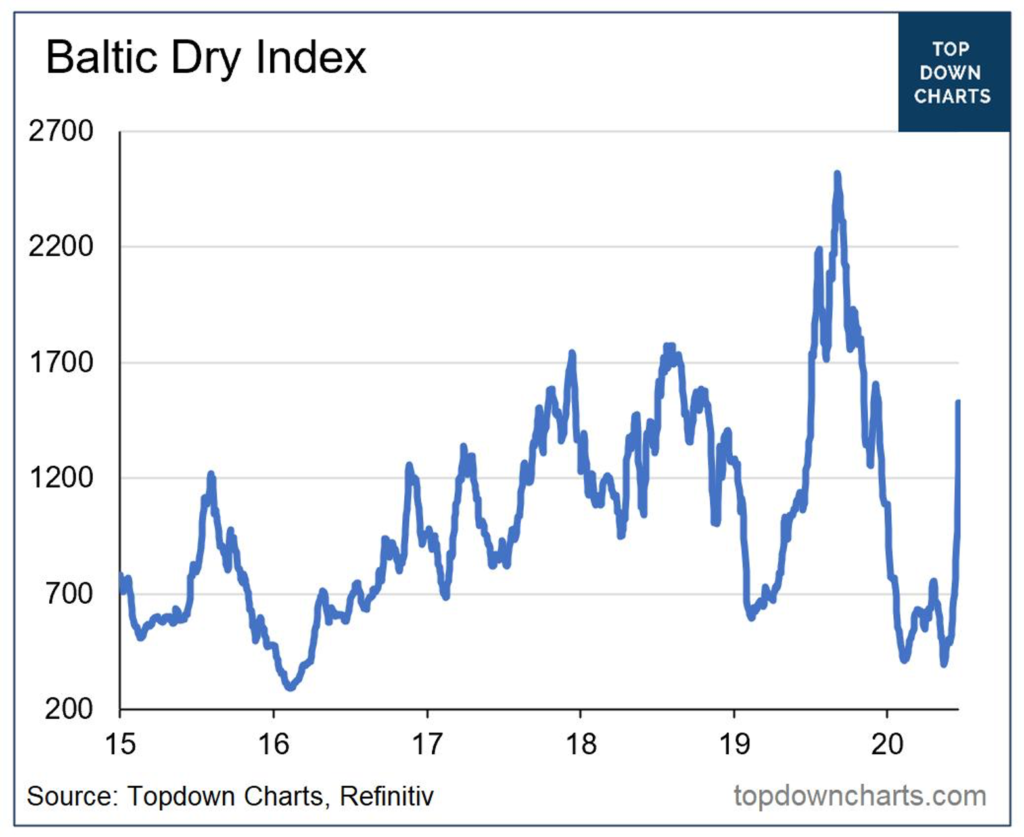
6. June Sets Record for High-Yield Sales
Junk issuers have already sold $46.7 billion of bonds in June, surpassing the prior monthly record of $46.4 billion in September 2013, according to data compiled by Bloomberg. Today’s $500 million deal from Navios Logistics pushed the year-to-date volume to $199 billion, up about 66.5% on the same period a year ago, the data show.
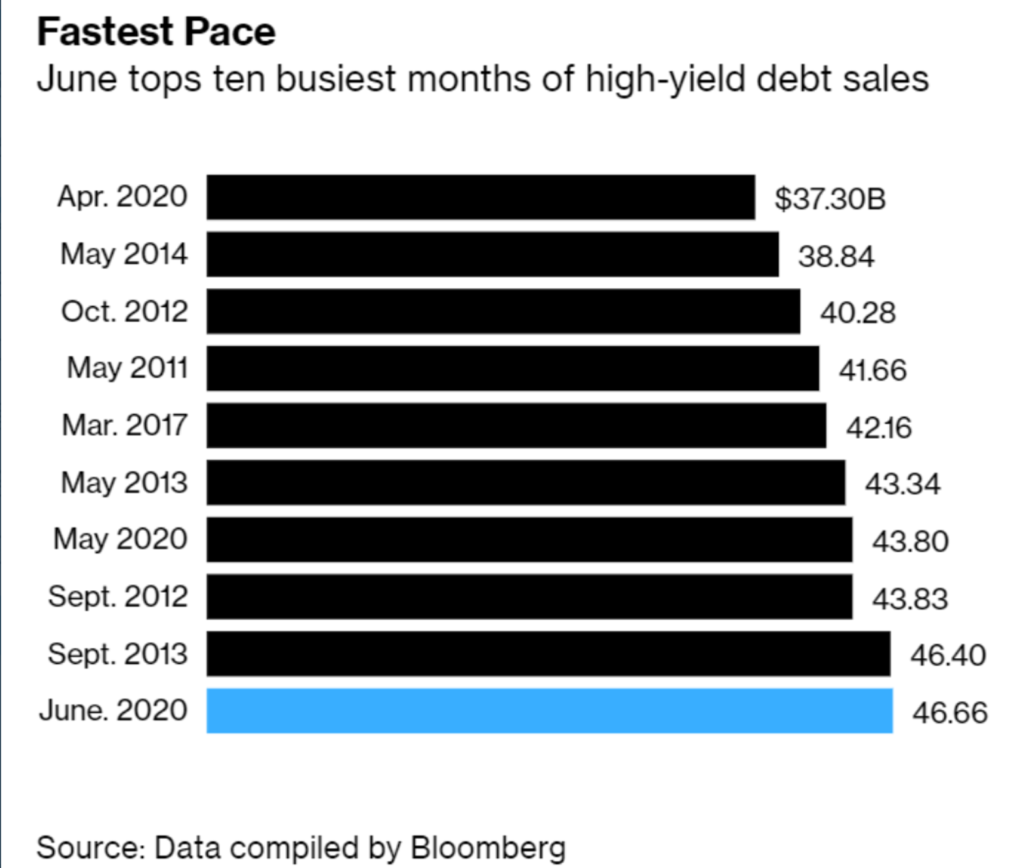
Junk Bonds Topple Monthly Sales Record in ‘Party Like No Other’ By David Caleb Mutua
7. Starter Home Index Turning Up….Millennial Home Buying

The Daily Shot https://blogs.wsj.com/dailyshot/2020/06/24/the-daily-shot-new-starter-homes-made-a-comeback-in-may/
8. Demographics—Economic Growth by Generation
From Daniel Crosby Linkedin
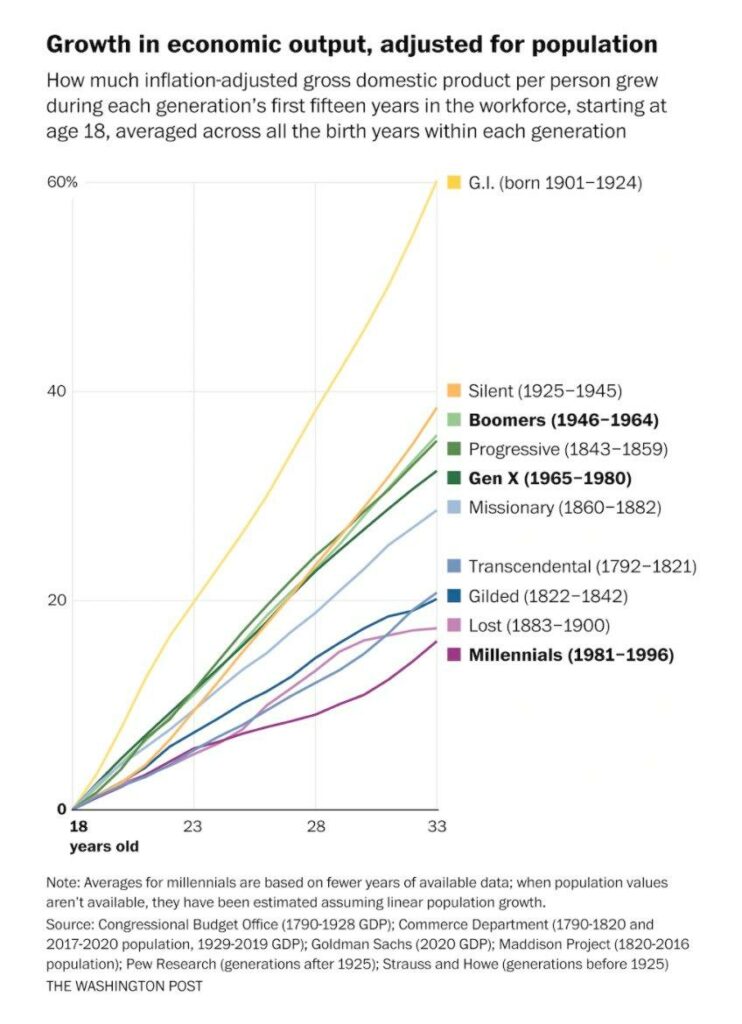
https://www.linkedin.com/in/danielcros
9. Worst Hit Sectors Get Small Share of PPP Loans

The Daily Shot https://blogs.wsj.com/dailyshot/2020/06/24/the-daily-shot-new-starter-homes-made-a-comeback-in-may/
10. Five Steps to Cultivate a State of Flow for More Happiness
Flow can make you more productive and happy. Take these steps to find your flow.
Have you ever found yourself so immersed in a task that everything around you seemed to fade into the background, a zen-like focus getting you so “in the zone” that time stood still?

This is flow.
Science has long shown that a flow state is the pillar of peak performance. There are numerous benefits associated with being in this state, including enhanced concentration, feelings of control, and improved productivity.
But now we’re learning that there is another important outcome that accompanies flow. One that has gone unnoticed: happiness.
Research shows that flow is a precursor to well-being and general life satisfaction. People who are happier find themselves in flow states more often and for longer periods of time.
The originator of flow theory, Mihaly Csikszentmihalyi, says that the rewards of flow are inexhaustible and boundless. He argues that during such a state, the activities being done (whether it’s a sport, art, business, or socializing) become intrinsically valuable. The acts themselves become worth doing for their own sake. The type of happiness that flow induces isn’t a fleeting hedonism. It’s a lasting sense of personal meaning and fulfillment.
And now researchers are keen on finding ways to get everyday normal people to enter into flow through daily activities. Flow and positive emotionality, it’s now believed, can be cultivated. It’s a matter of changing your mindset. Here are five different ways you can find more flow.
1. Make your intentions clear.
Flow is based on the system in the brain called intention memory. Rather than storing information from the past, this memory system allows you to be proactive by planning ahead. To activate it, consider the following:
- The task needs to challenge you (i.e. make use of your skills). You may think the easier the better, but this can often lead to boredom and apathy (the opposite of flow).
- The completion of this task should fulfill a goal that is personal to you.
- It’s key to analyze the steps that will bring you closer to this goal. Try to make sure the actions performed at each step are done deliberately, as opposed to habitually (at least to begin with—in time, with more flow experienced, the activity will eventually become more of a habit).

2. Stick to one goal at a time.
Flow is all about implementing one goal at a time. We often convince ourselves that multitasking is the way to do things, but it’s not. It makes us inefficient and leads to countless distractions.
Luckily, research suggests that there is a way to protect you and your goals from all the outside noise. According to the model of motivation, taking an “action-orientation” to your behaviors can help keep you on track towards achieving a single goal. Do the following:
- Disengage: Whether it’s a negative thought or a conflicting desire, you must disconnect from anything that acts as a barrier between you and your goal.
- Take initiative: Turn your intentions (outlined in the first step above) into actions.
- Be persistent: Maintain your performance until your intentions are fulfilled. It’s important that you check back in with your initial intentions (first step) because we often lose sight of what we originally planned.

3. Practice mindfulness.
Being mindful means you’re focused on the present moment in a non-judgmental fashion.
A study found that athletes who engaged in a six-week mindfulness training program were significantly more likely to experience flow during their performance. Here are a few ways to engage in mindfulness:
article continues after advertisement
- Perform the 5-4-3-2-1 coping technique. This method is meant to help you relax and draw your attention to the present moment. List five things you can see, four things you can hear, three things you can feel, two things you can smell, and one thing you can taste.
- Practice mindful meditation by using meditation apps.
4. Develop an autotelic style.
People with an autotelic style personality find pleasure in the task itself, rather than using that task as a stepping stone to advance their career or relationships. These individuals can balance work and play, resulting in greater enjoyment of life. They have no trouble getting into a state of flow. Here are a few tips to live like an autotelic person:
- Loosen up: It’s hard to enjoy what you’re doing if you’re constantly stressed out. Allow yourself to relax and be immersed in the activity in front of you. The mindfulness tips will also help here.
- Be adventurous: Increase your chances of finding what you enjoy by opening yourself up to new experiences. Find new hobbies, talk to new people, and experience things that are different than what you’re used to.
5. Find the balance between skill and challenge.
To enter a state of flow, you need to find a balance between the challenge level of a task and your skill level. If this balance is not met, you may experience feelings such as anxiety and worry. Find this balance by doing the following:
- Begin by stating all the steps necessary to complete a task.
- Then rate the degree of difficulty on a scale of one to five.
- Next, asses your skill level and rate it. Draw on past experiences if necessary.
- Now, with your skills in mind, re-rate how challenging you think the task is. Ideally, you want your challenge rating and your skill rating to match.
A version of this article was published on Health Central.
Disclaimer
Lansing Street Advisors is a registered investment adviser with the State of Pennsylvania..
To the extent that content includes references to securities, those references do not constitute an offer or solicitation to buy, sell or hold such security as information is provided for educational purposes only. Articles should not be considered investment advice and the information contain within should not be relied upon in assessing whether or not to invest in any securities or asset classes mentioned. Articles have been prepared without regard to the individual financial circumstances and objectives of persons who receive it. Securities discussed may not be suitable for all investors. Please keep in mind that a company’s past financial performance, including the performance of its share price, does not guarantee future results.
Material compiled by Lansing Street Advisors is based on publically available data at the time of compilation. Lansing Street Advisors makes no warranties or representation of any kind relating to the accuracy, completeness or timeliness of the data and shall not have liability for any damages of any kind relating to the use such data.
Material for market review represents an assessment of the market environment at a specific point in time and is not intended to be a forecast of future events, or a guarantee of future results.
Indices that may be included herein are unmanaged indices and one cannot directly invest in an index. Index returns do not reflect the impact of any management fees, transaction costs or expenses. The index information included herein is for illustrative purposes only